Was Einstein wrong? Why some astrophysicists are questioning the theory of space-time

As in history, revolutions are the lifeblood of science. Bubbling undercurrents of disquiet boil over until a new regime emerges to seize power. Then everyone's attention turns to toppling their new ruler. The king is dead, long live the king.
This has happened many times in the history of physics and astronomy. First, we thought Earth was at the center of the solar system — an idea that stood for over 1,000 years. Then Copernicus stuck his neck out to say that the whole system would be a lot simpler if we are just another planet orbiting the sun. Despite much initial opposition, the old geocentric picture eventually buckled under the weight of evidence from the newly invented telescope.
Then Newton came along to explain that gravity is why the planets orbit the sun. He said all objects with mass have a gravitational attraction towards each other. According to his ideas we orbit the sun because it is pulling on us, the moon orbits Earth because we are pulling on it. Newton ruled for two-and-a-half centuries before Albert Einstein turned up in 1915 to usurp him with his General Theory of Relativity. This new picture neatly explained inconsistencies in Mercury's orbit, and was famously confirmed by observations of a solar eclipse off the coast of Africa in 1919.
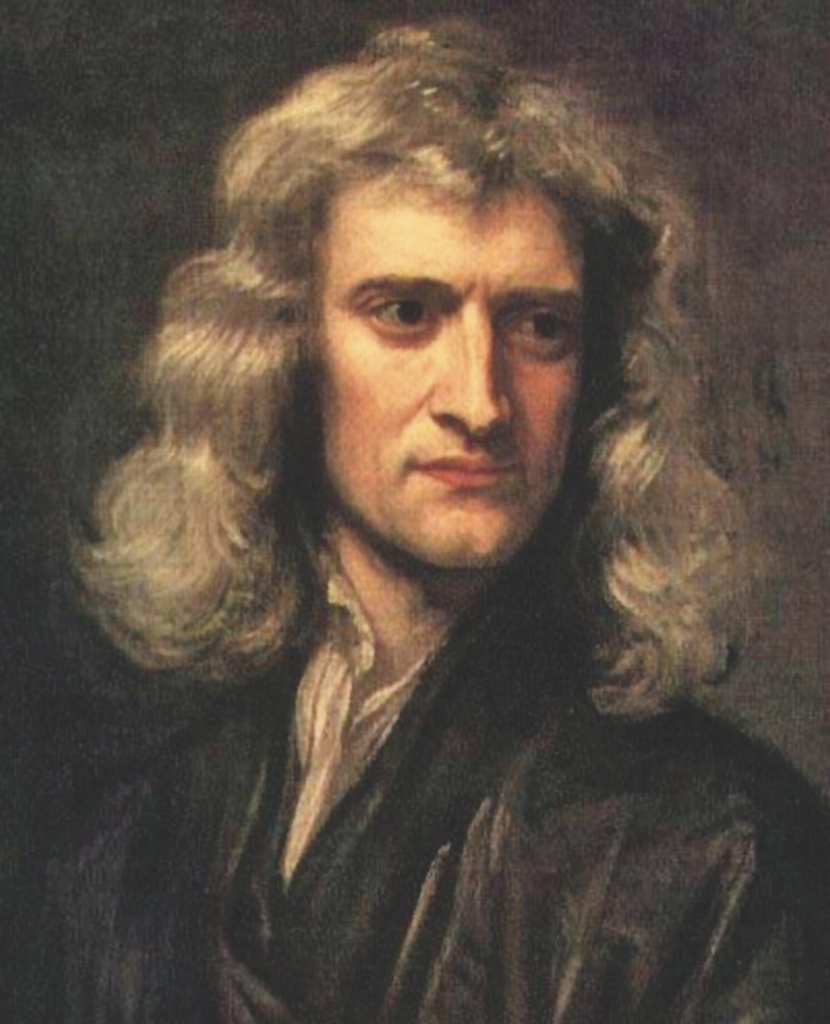
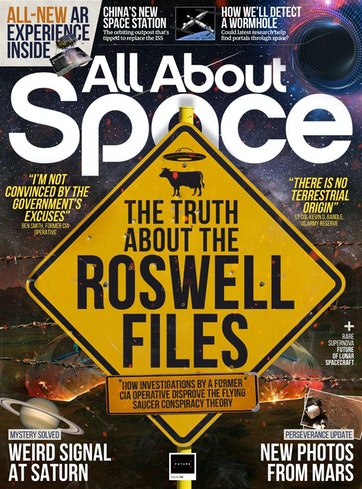
This article is brought to you by All About Space.
All About Space magazine takes you on an awe-inspiring journey through our solar system and beyond, from the amazing technology and spacecraft that enables humanity to venture into orbit, to the complexities of space science.
Instead of a pull, Einstein saw gravity as the result of curved space. He said that all objects in the universe sit in a smooth, four-dimensional fabric called space-time. Massive objects such as the sun warp the space-time around them, and so Earth's orbit is simply the result of our planet following this curvature. To us that looks like a Newtonian gravitational pull. This space-time picture has now been on the throne for over 100 years, and has so far vanquished all pretenders to its crown. The discovery of gravitational waves in 2015 was a decisive victory, but, like its predecessors, it too might be about to fall. That's because it is fundamentally incompatible with the other big beast in the physics zoo: Quantum theory.
The quantum world is notoriously weird. Single particles can be in two places at once, for example. Only by making an observation do we force it to 'choose'. Before an observation we can only assign probabilities to the likely outcomes. In the 1930s, Erwin Schrödinger devised a famous way to expose how perverse this idea is. He imagined a cat in a sealed box accompanied by a vial of poison attached to a hammer. The hammer is hooked up to a device that measures the quantum state of a particle. Whether or not the hammer smashes the vial and kills the cat hinges on that measurement, but quantum physics says that until such a measurement is made, the particle is simultaneously in both states, which means the vial is both broken and unbroken and the cat is alive and dead.
Such a picture cannot be reconciled with a smooth, continuous fabric of space-time. "A gravitational field cannot be in two places at once," said Sabine Hossenfelder, a theoretical physicist at the Frankfurt Institute for Advanced Studies. According to Einstein, space-time is warped by matter and energy, but quantum physics says matter and energy exist in multiple states simultaneously — they can be both here and over there. "So where is the gravitational field?" asks Hossenfelder. "Nobody has an answer to that question. It's kind of embarrassing," she said.
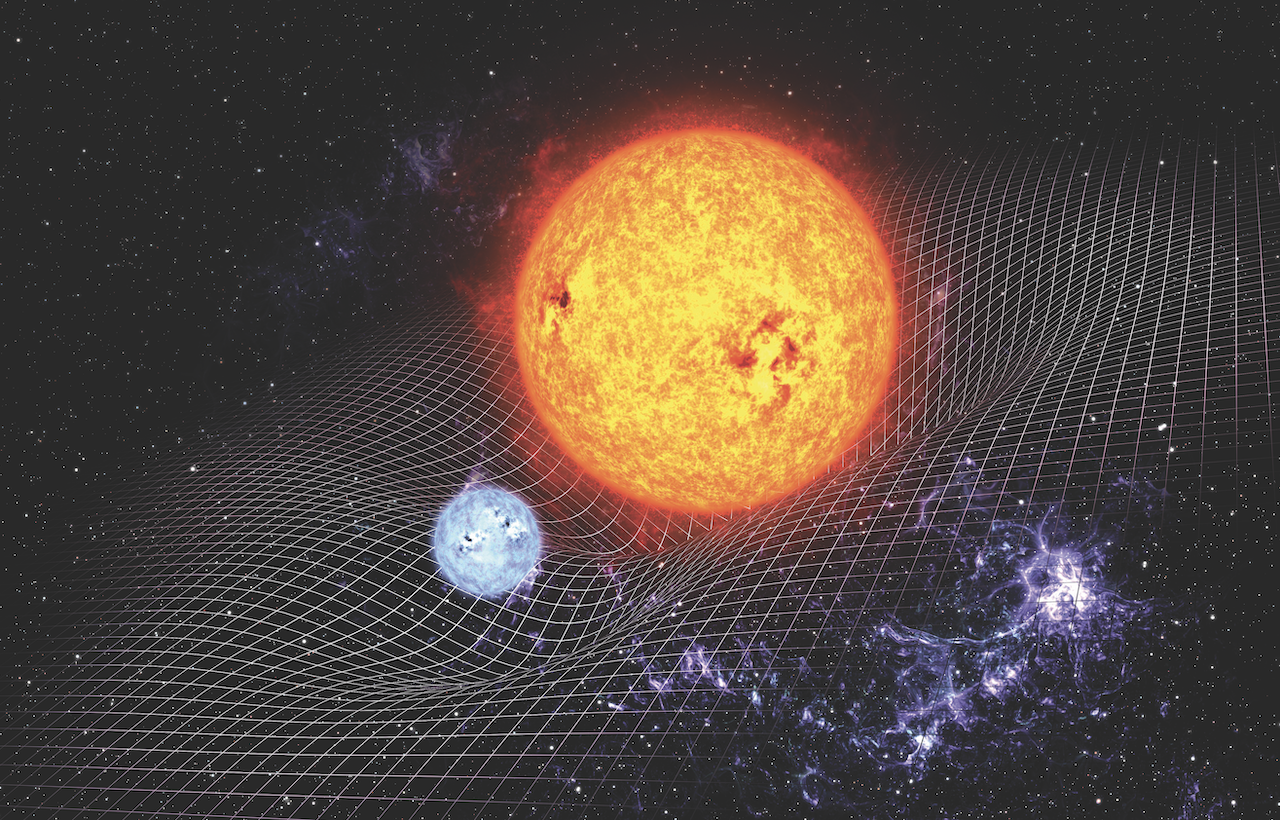
Try and use general relativity and quantum theory together, and it doesn't work. "Above a certain energy, you get probabilities that are larger than one," said Hossenfelder. One is the highest probability possible — it means an outcome is certain. You can't be more certain than certain. Equally, calculations sometimes give you the answer infinity, which has no real physical meaning. The two theories are therefore mathematically inconsistent. So, like many monarchs throughout history, physicists are seeking a marriage between rival factions to secure peace. They're searching for a theory of quantum gravity— the ultimate diplomatic exercise in getting these two rivals to share the throne. This has seen theorists turn to some outlandish possibilities.
Sign up for the Live Science daily newsletter now
Get the world’s most fascinating discoveries delivered straight to your inbox.
Arguably the most famous is string theory. It's the idea that sub-atomic particles such as electrons and quarks are made from tiny vibrating strings. Just as you can play strings on a musical instrument to create different notes, string theorists argue that different combinations of strings create different particles. The attraction of the theory is that it can reconcile general relativity and quantum physics, at least on paper. However, to pull that particular rabbit out of the hat, the strings have to vibrate across eleven dimensions — seven more than the four in Einstein's space-time fabric. As yet there is no experimental evidence that these extra dimensions really exist. "It might be interesting mathematics, but whether it describes the space-time in which we live, we don't really know until there is an experiment," said Jorma Louko from the University of Nottingham.

Partly inspired by string theory's perceived failings, other physicists have turned to an alternative called Loop Quantum Gravity (LQG). They can get the two theories to play nicely if they do away with one of the central tenets of general relativity: That space-time is a smooth, continuous fabric. Instead, they argue, space-time is made up of a series of interwoven loops — that it has structure at the smallest size scales. This is a bit like a length of cloth. At first glance it looks like one smooth fabric. Look closely, however, and you'll see it is really made of a network of stitches. Alternatively, think of it like a photograph on a computer screen: Zoom in, and you'll see it is really made of individual pixels.
The trouble is that when LQG physicists say small, they mean really small. These defects in space-time would only be apparent on the level of the Planck scale —around a trillionth of a trillionth of a trillionth of a meter. That's so tiny that there would be more loops in a cubic centimeter of space than cubic centimeters in the entire observable universe. "If space-time only differs on the Planck scale then this would be difficult to test in any particle accelerator," says Louko. You'd need an atom smasher a 1,000-trillion-times more powerful than the Large Hadron Collider (LHC) at CERN. How, then, can you detect space-time defects that small? The answer is to look across a large area of space.
Light arriving here from the furthest reaches of the universe has traveled through billions of light years of space-time along the way. While the effect of each space-time defect would be tiny, over those distances interactions with multiple defects might well add up to a potentially observable effect. For the last decade, astronomers have been using light from far-off Gamma Ray Bursts to look for evidence in support of LQG. These cosmic flashes are the result of massive stars collapsing at the ends of their lives, and there is something about these distant detonations we currently cannot explain. "Their spectrum has a systematic distortion to it," said Hossenfelder, but no one knows if that is something that happens on the way here or if it's something to do with the source of the bursts themselves. The jury is still out.
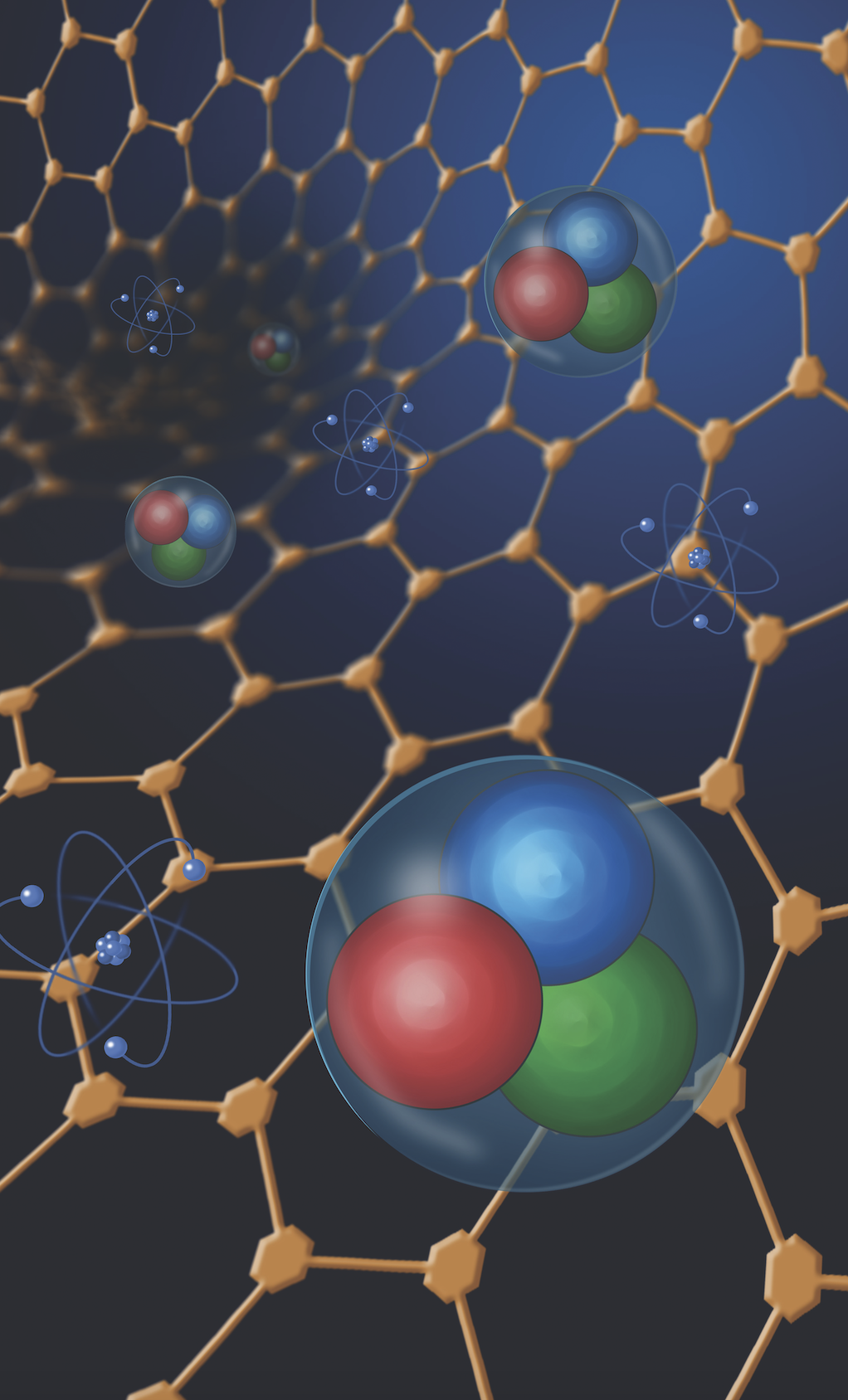
To make progress, we might have to go a step further than saying space-time isn't the smooth, continuous fabric Einstein suggested. According to Einstein, space-time is like a stage that remains in place whether actors are treading its boards or not —even if there were no stars or planets dancing around, space-time would still be there. However, physicists Laurent Freidel, Robert Leigh, and Djordje Minic think that this picture is holding us back. They believe space-time doesn't exist independently of the objects in it. Space-time is defined by the way objects interact. That would make space-time an artifact of the quantum world itself, not something to be combined with it. "It may sound kooky," said Minic, "but it is a very precise way of approaching the problem."
The attraction of this theory — called modular space-time — is that it might help solve another long-standing problem in theoretical physics regarding something called locality, and a notorious phenomenon in quantum physics called entanglement. Physicists can set up a situation whereby they bring two particles together and link their quantum properties. They then separate them by a large distance and find they are still linked. Change the properties of one and the other will change instantly, as if information has traveled from one to the other faster than the speed of light in direct violation of relativity. Einstein was so perturbed by this phenomenon that he called it 'spooky action at a distance'.
Modular space-time theory can accommodate such behavior by redefining what it means to be separated. If space-time emerges from the quantum world, then being closer in a quantum sense is more fundamental than being close in a physical sense. "Different observers would have different notions of locality," said Minic, “it depends on the context.” It's a bit like our relationships with other people. We can feel closer to a loved one far away than the stranger who lives down the street. "You can have these non-local connections as long as they are fairly small," said Hossenfelder.
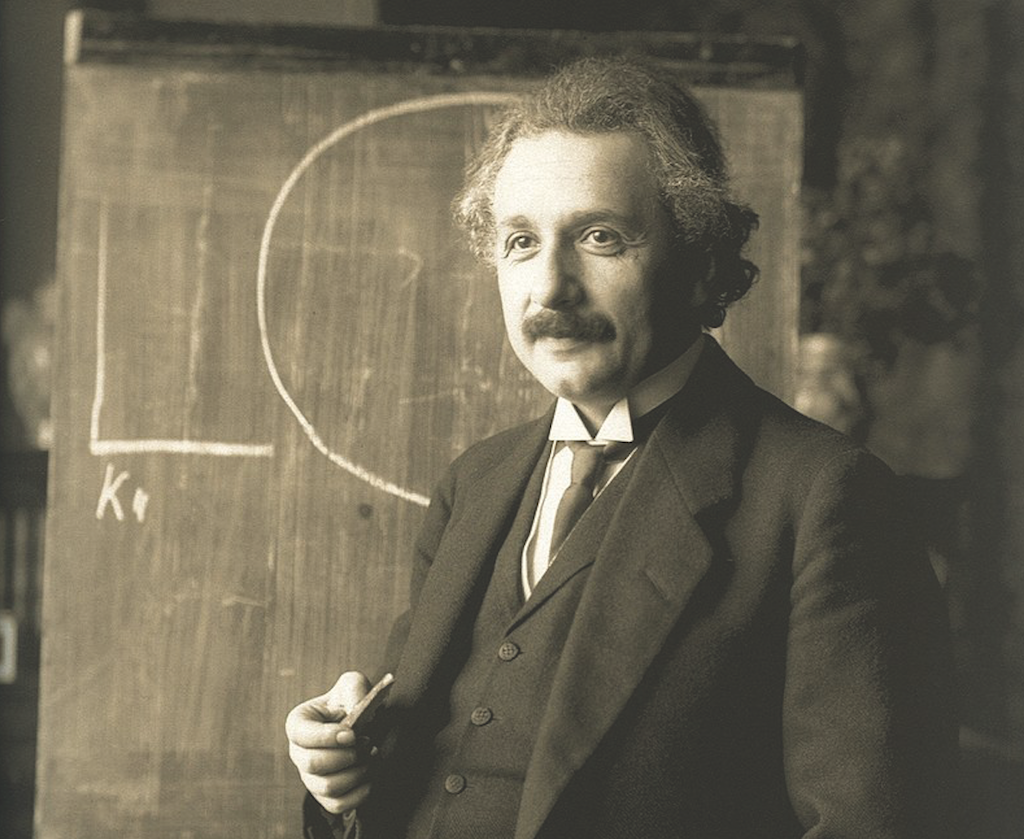
Freidel, Leigh, and Minic have been working on their idea for the last five years, and they believe they are slowly making progress. "We want to be conservative and take things step-by-step," said Minic, "but it is tantalizing and exciting". It's certainly a novel approach, one that looks to "gravitationalize" the quantum world rather than quantizing gravity as in LQG. Yet as with any scientific theory, it needs to be tested. At the moment the trio are working on how to fit time into their model.
This may all sound incredibly esoteric, something only academics should care about, but it could have a more profound effect on our everyday lives. "We sit in space, we travel through time, and if something changes in our understanding of space-time this will impact not only on our understanding of gravity, but of quantum theory in general," said Hossenfelder. "All our present devices only work because of quantum theory. If we understand the quantum structure of space-time better that will have an impact on future technologies — maybe not in 50 or 100 years, but maybe in 200," she said.
The current monarch is getting long in tooth, and a new pretender is long overdue, but we can't decide which of the many options is the most likely to succeed. When we do, the resulting revolution could bear fruit not just for theoretical physics, but for all.
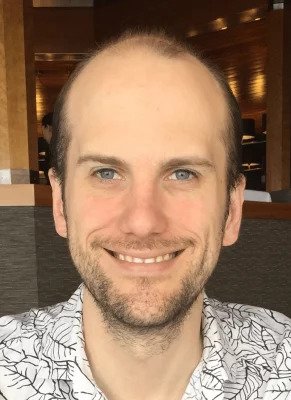
Colin Stuart is an award-winning astronomy author, speaker and tutor based in the U.K. His popular science books have sold more than 400,000 copies worldwide and have been translated into 21 languages, and he has written more than 200 popular science articles for publications including The Guardian, the Wall Street Journal and the European Space Agency. The asteroid (15347) Colinstuart is named after him and he runs an online Astrophysics for Beginners course and a science writing course.










